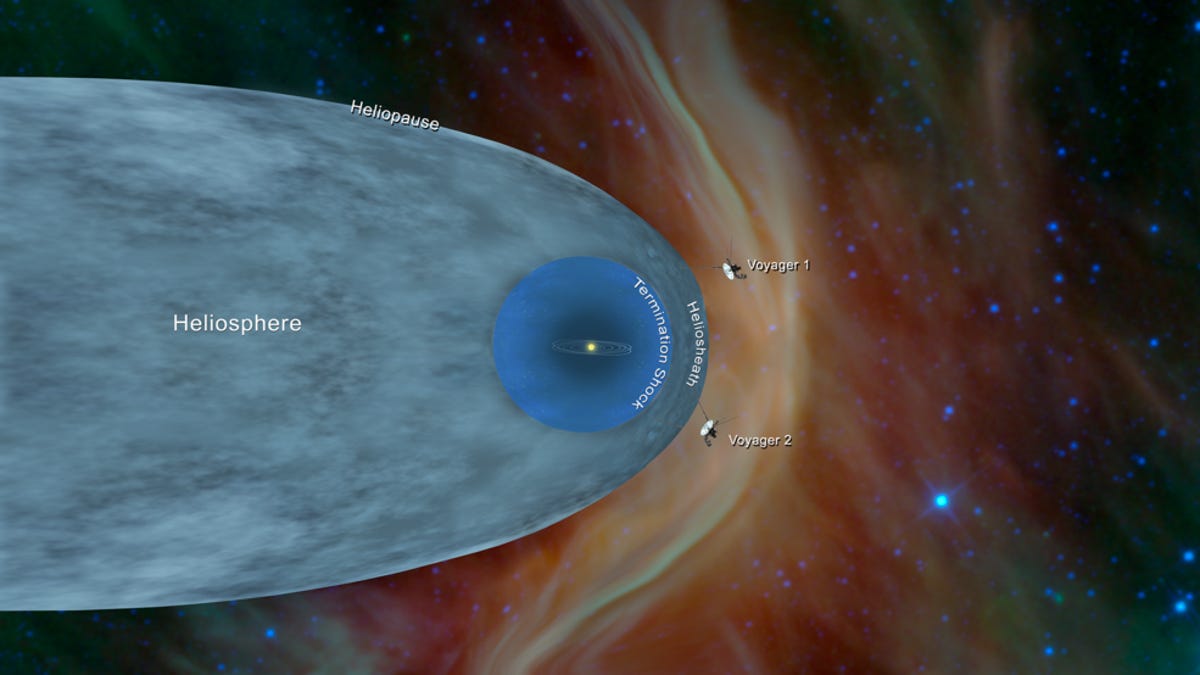NASA Voyager 2 enters interstellar space after years of cosmic sightseeing
The probe joins Voyager 1 as only the second human-made object to escape the heliosphere.
Welcome to the history books, Voyager 2.
NASA launched the probe back in 1977 and all these decades later it's finally stepped out into the space between the stars. It joins Voyager 1, which entered interstellar space in 2012.
A NASA illustration of the Voyager spacecraft.
NASA announced Monday that Voyager 2 has left the heliosphere, an area the agency describes as a "vast bubble around the sun and the planets dominated by solar material and magnetic fields."
Data shows the probe crossed over on Nov. 5 and is now 11 billion miles (18 billion kilometers) from Earth.
NASA released a video marking the historic event. "Your smartphone has 200,000 times more memory than what the Voyager spacecraft have," says Voyager project manager Suzanne Dodd, which helps put the evolution of space technology since Voyager's launch into perspective.
Voyager 2 carries an instrument called the Plasma Science Experiment (PLS) that detects the properties of solar wind. NASA noticed the PLS saw a serious decline in the speed of solar wind particles on Nov. 5. After that, it picked up no solar wind flow, indicating the probe's entry into interstellar space.
"Our studies start at the sun and extend out to everything the solar wind touches," says Nicola Fox, director of the Heliophysics Division at NASA . "To have the Voyagers sending back information about the edge of the Sun's influence gives us an unprecedented glimpse of truly uncharted territory."
Voyager 2 launched a couple weeks before Voyager 1, and both have long outlived their original five-year missions to study Jupiter and Saturn. NASA scientists are now excited to learn what the probes can teach us about the realm beyond the heliosphere boundary.
As one of our most-distant emissaries, Voyager 2 carries a Golden Record, a gold-plated phonograph record containing images and sounds of life and culture on Earth. "Since the spacecraft could last billions of years, these circular time capsules could one day be the only traces of human civilization," says NASA.
Besides passing the interstellar milestone, Voyager 2 is also NASA's longest running mission. The space agency hopes it will be able to collect data from the spacecraft until at least 2025.
First published Dec. 10, 8:36 a.m. PT.
Update, 12 p.m.: Adds NASA video marking the event.
CNET's Holiday Gift Guide: The place to find the best tech gifts for 2018.
NASA turns 60: The space agency has taken humanity farther than anyone else, and it has plans to go further.


